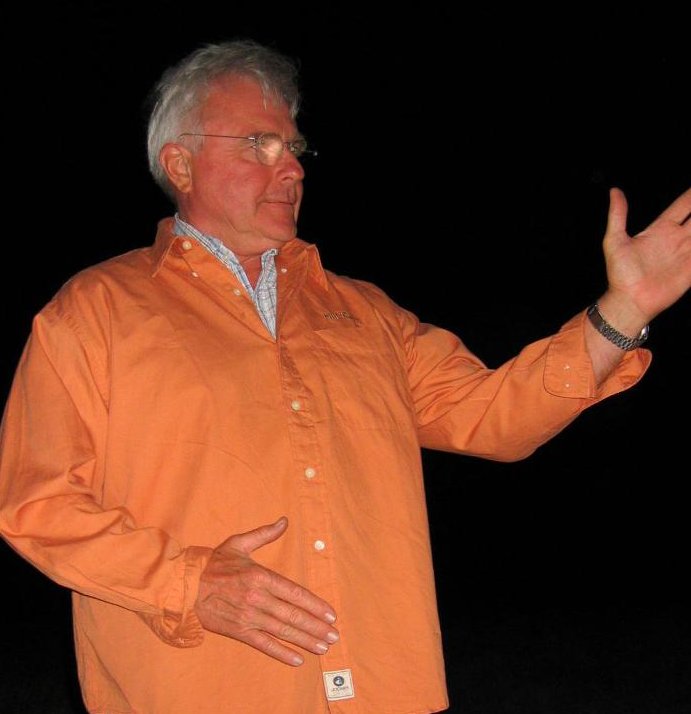 Harvey Croze asks you to Donate Now (AERP co-founder and ATE Trustee ) |
Name a Baby Elephant - Special Holiday Offer
ATE has a naming program for donors. Since it is a very special privilege to name a calf we ask for a large donation of $2500. It is not like an animal adoption program where thousands of people might adopt the same whale or whatever. This calf becomes "your calf" and yours alone. The name remains for all time even after the individual may have died.
With your donation you receive photographs and a history of the your calf and its family. You will get periodic updates and be able to follow this calf's life over many years. 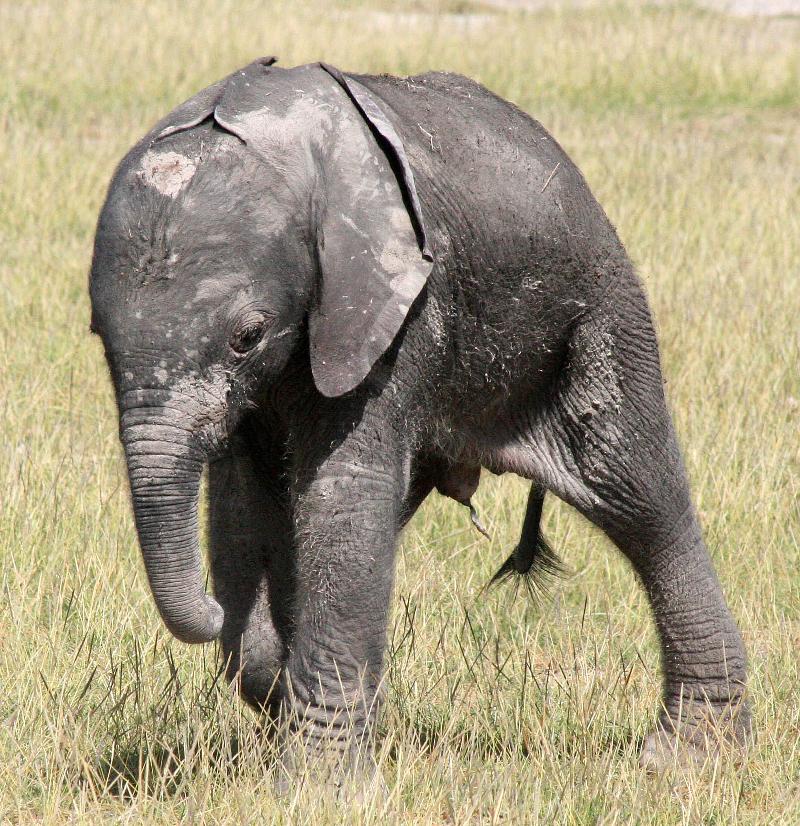 | |
Newborn calf still very wobbly on his feet: calves like this one need names
|
The program started in 1988 and some of those original donors are now following the offspring of their calves who have now grown up. Naming a calf creates a lifetime relationship with an individual wild elephant. As a special Holiday offer we are asking for $2000 to name a calf. Take advantage of this offer and send us an email. |
|
|
Amboseli Book Review
| In the prestigious International Journal of Primatology Dr. A.V. Georiev of Harvard University exhorts his colleagues to read The Amboseli Elephants: A Long-term Perspective on a Long-lived Mammal, saying:
"This book will undoubtedly become a classic academic volume and will set the standard for similar works for decades." You can find a link to the whole review by clicking here. |
|
|
Training Course on Filmmaking
| |
|
In late October ATE sent Robert Ntawuasa, our IT, GIS, data clerk, and general jack-of-all-trades staff member, for a three-week video film-making course at the Mohammed Amin Foundation in Nairobi. The highly intensive course covered camera, sound, lighting and editing. Robert passed with flying colors and has already designed a shoulder rig for the recently-donated Canon 60D. We shall be making more use of video imaging for research, conservation and outreach. Watch for improving content on the ATE YouTube channel.
|
|
Newsletter Archive
| |
Want to catch up on past ATE Newsletters? You can find links to the whole set by clicking here.
|
|
|
News from the Amboseli Trust for Elephants
November - December 2011
|
Greetings!
The holidays are nearly upon us and we have reason to celebrate as the year comes to a close. After the devastating losses of 2009 and the slow recovery during 2010, the elephants are enjoying life once again. There's a new spring to their step, there are more interactions, more play, and just a general sense of well-being. Add to that the tremendous excitement of newborn babies and the Amboseli elephant families are transformed.
There is still serious danger lurking in the wings but for the moment the elephants are blissfully unaware. With our partners, the Kenya Wildlife Service, the Big Life Foundation and the Amboseli-Tsavo Game Scouts, we are keeping the poachers at bay, but how long we can keep the elephants safe is unknown. With the price of ivory so high people are willing to risk their lives to kill elephants.
The answer, of course, lies in the demand. We are trying to get as much information as possible out to the Chinese to make them realize the true, bloody cost of ivory. Working again with our international partners we will be campaigning vigorously all next year, creating awareness about elephants and what we will lose if they are all slaughtered.
We need your help for this advocacy. I know all of you care a great deal for elephants. Please donate to help us in this vital task.
With best regards,
Cynthia Moss
DirectorAmboseli Trust for Elephants |
|
|
Renewal
|
Bogoria and her new daughter
|
There is a very exciting and unusual phenomenon occurring in Amboseli. We're having an amazing elephant baby boom. It is all because of the horrific drought of 2009. The females were in such poor condition in 2009 that they stopped reproductive activity. Elephants have to have a certain threshold of body fat reserves to produce the hormones necessary for coming into oestrus. They were way below this threshold. With a twenty-two month gestation period any calf conceived in 2009 would be born in 2011. It appears that only two calves were conceived during the drought: Hollie had a stillbirth in May; Freya somehow managed to maintain her pregnancy and give birth to a healthy male calf in June.
Now we are expecting a deluge of babies. In 2010 after adequate rain and the subsequent growth of vegetation, the females put on weight and once again they started reproductive cycling. Twenty-two months later they're giving birth.
During the drought 67% of the calves born in 2008 calves died and 50% of those born in 2009 died. These mothers who lost their calves thus became available in 2010. Add those to the ones who had calves in earlier years and to the young females reaching sexual maturity and it adds up to about 300 females. They were all ready to mate (it's been a good time for the males as well!) and if they conceived they could give birth in late 2011 and all through 2012.
The baby boom started on October 12th with the birth of a female calf to matriarch Qumquat. Eight days later Angelina of the AA family also had a daughter. A third calf was recorded in the CB family to Cerise and a fourth calf was born to the beautiful Bogoria of the BBs. Since then 12 more calves have been born. More will come. So many of the females look hugely pregnant; they're moving slowly, basically waddling, and their breasts are filling with milk.
To name one of these calves, see the details in the left column.
|
 |
Off They Go: Elephants Define Their Spatial Requirements - Harvey Croze, Robert Ntawuasa
The families of the five collared females (see the August 2011 Newsletter, which you can find here), are showing us by their movements what they need in terms of elbow room in the Amboseli ecosystem.
The results from the July collaring exercise are exciting indeed, as the maps show.
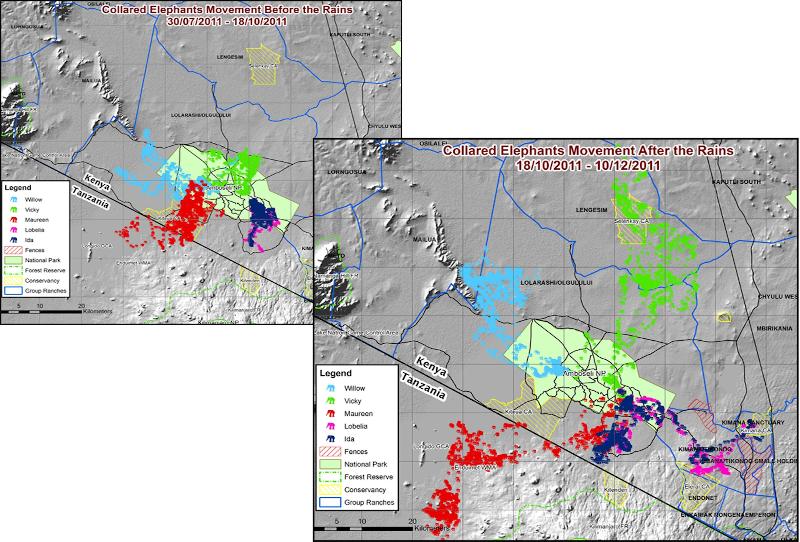 In the weeks following the July collaring, it remained dry, and the families stayed close to the Amboseli basin, not venturing more than ten to fifteen kilometers from the national park boundary (small map). It started raining early this rainy season, a couple of light showers in early October, and then 30 mm in the last week of the month. More followed in November and into early December. So far the camp rain gauge has recorded 220 mm, which for Amboseli is exceptionally good for the 'short rains'. In the weeks following the July collaring, it remained dry, and the families stayed close to the Amboseli basin, not venturing more than ten to fifteen kilometers from the national park boundary (small map). It started raining early this rainy season, a couple of light showers in early October, and then 30 mm in the last week of the month. More followed in November and into early December. So far the camp rain gauge has recorded 220 mm, which for Amboseli is exceptionally good for the 'short rains'.
The elephants started moving out almost immediately, each family pretty well in the directions predicted by long years of watching them depart the protection of the national park (large map shows movements from last week in October to present).
After seeing out the dry period almost exclusively in the Kitirua Concession (community conservation works!), Maureen and the MB family (red symbols) moved deep -- 30 kms -- into Tanzania, showing how vital it is to maintain the cross-border access. It also underscores the urgency of negotiating with Tanzania to ensure that hunting, which our neighbors support, doesn't occur in the adjacent Longido Game Control Area. As Cynthia pointed out during the 1995 debacle when Amboseli bulls were gunned down by paying 'sport hunters', shooting an Amboseli elephant is about as 'sporting' as shooting your neighbour's poodle.
Ida and the IB family (dark blue symbols) are far more conservative. They also went south, but mysteriously stopped just short of the border. What were they telling us? Was it a coincidence that they stopped just there? The border is not marked on the ground. Was there some new, repellant development or danger on the other side? Had their passports expired? We plan to fly over the area to find out.
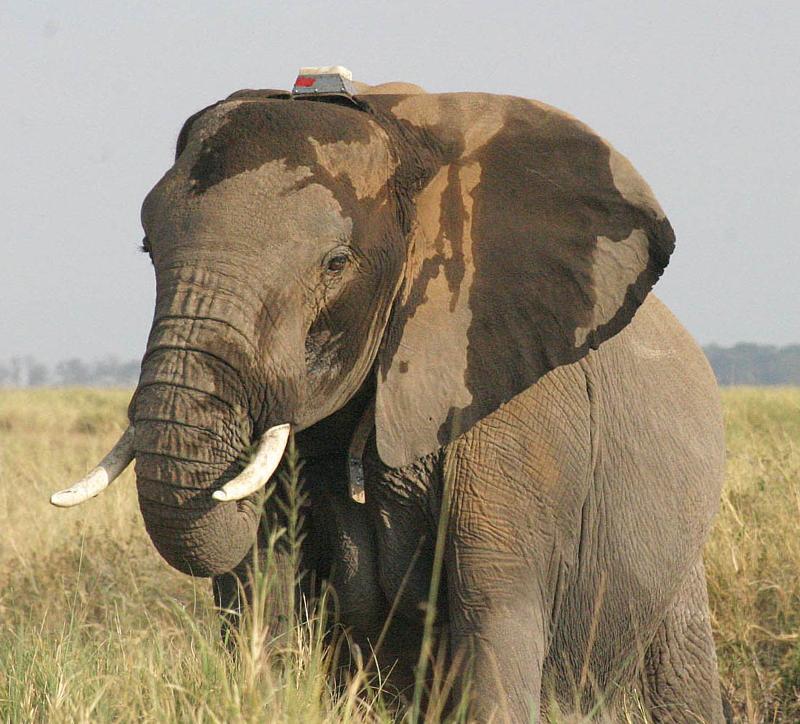 | |
IDA's collar is giving us fascinating data
|
Subsequently, the IBs followed the footsteps of Lobelia and the LB family (pink), threading their way east through the uncontrolled development of big, ugly hotels, following the newly established community trust lands (thanks to the negotiations of our colleagues in the African Wildlife Foundation). Amazingly, the IBs and the LBs found their way between the two fenced high-intensity agriculture areas (red cross-hatches) and managed to squeeze through the 800 m gap left by a grotesque Chinese road camp on the N-S Oloitokitok Road into the relative safety of the Kimana Sanctuary.
Meanwhile, Willow and the WA family (light blue) set off to the northwest and have been plying the relatively unpopulated space north of the main Namanga Road. The area is rich in tasty Acacia woodlands, but generally uninhabitable in the dry season due to the absence of permanent standing or flowing water.
Finally, good old Vicky of the VAs (green), who has had three collars since the late 1990s, defined clear paths north 40 km to the conservancy on the Eselenkei Group Ranch, where Porini Camp generates income for the local community. The VAs have been giving us telemetry data on and off since the late 1970s, when Vicky's now departed relative, Virgina, had an old-fashioned VHF radio collar for several months. At that time, the VAs were sighted more to the west, but the data from the old technology were too few to draw firm conclusions.
Thus, the patterns that are emerging stress the importance of ensuring the elephants' continued safe passage into the ecosystem surrounding the park. In just a few short months, five of the 54 families have shown us that, this year, they have made use of a landscape nearly ten times the size of the national park. It is more urgent than ever to cultivate the goodwill of the Maasai community and help them realize benefits from wildlife apart from the corridor-blocking construction of mass tourism hotels. |
 |
The History of the LC Family
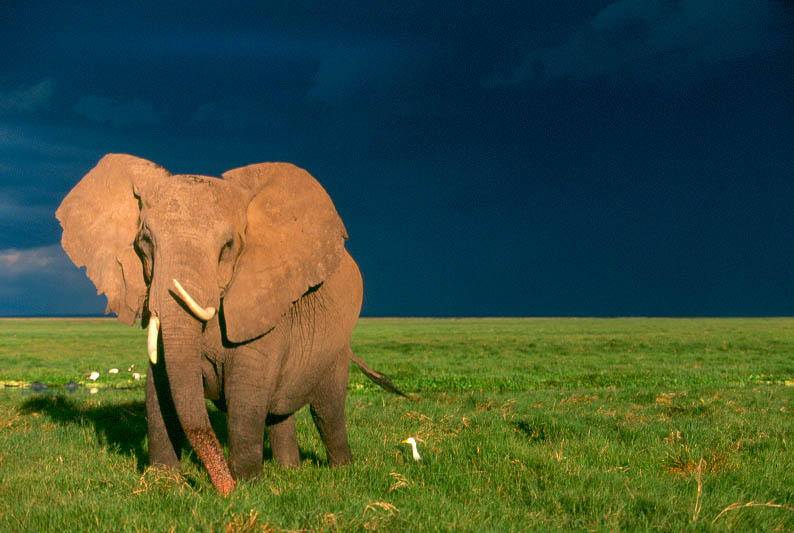 | | The wonderful Lillian against a rainy season sky in Amboseli |
The LC family is another family with a somewhat unusual history. The members originally belonged to the LA family when I first got to know them back in 1975. In those early years I was working out how many families there were in the population and who belonged with whom. As the adult females were photographed and the composition of the groups recorded, the family structures began to emerge. Each of these families was then assigned a letter of the alphabet. Thus the first family photographed became the 'A' family, the next the 'B' family and so on.
I was working very much part-time in Amboseli and not living there, so it took quite some time to get to know all the families. The 'L' family was not recorded until March 23, 1975. That was the first time they were sighted and photographed. Luckily, it was a neat, small, self-contained group consisting of seven members:
3 adult females
1 8-10 year old female
1 4-5 year old
1 2-3 year old
1 12+ year old male
The largest adult female was very distinctive looking because her tusks were strikingly asymmetrical with her left tusk curving upward. I saw this female and her family over the next three days and got to know them a bit better, well enough to assign them the letter 'L'.
I set up a permanent research camp in Amboseli in September 1975 and was living there more or less full time. I now saw many of the central families on almost a daily basis. The 'L' family was one of the ones seen regularly. However, the original seven were not always all together. There was often an unusual grouping of just youngsters - the 8-10 year old female with three calves. Sometimes they were on their own; sometimes back with the up-curved female. It was intriguing why such a young female would go off on her own with just calves.
During 1976 the family was seen 22 times. By the end of that year I had registered many families, so many that I actually had to start through the alphabet a second time. The A family became AA and the new As became the AB family. The same system was used down the alphabet. Thus the L family became the LAs when it was necessary to assign another family the letter L. The new family became the LBs.
The individual members in the designated families were also named, each getting a name beginning with their family initial. In the LA family I named the big adult female with the up-curved tusk, Lillian. The next adult female was called Lynne. The third adult female had disappeared and so never got named. The 8-10 year old female was named Louise. Eventually the two female calves were called Libby and Lee and the young male was named Accident Prone because he kept getting big gashes out of his ears.
To read the full history of the LCs click here.
|
 |
|
|
We have much to look forward to in this coming year. The babies that have just been born and those we're expecting give us hope for the future of the Amboseli elephants. We plan to work as hard as ever to protect them and conserve their ecosystem.
All of us at ATE wish you Happy Holidays and a Joyful and Peaceful New Year.
With all best wishes,
Cynthia Moss
Amboseli Trust for Elephants |
|
|